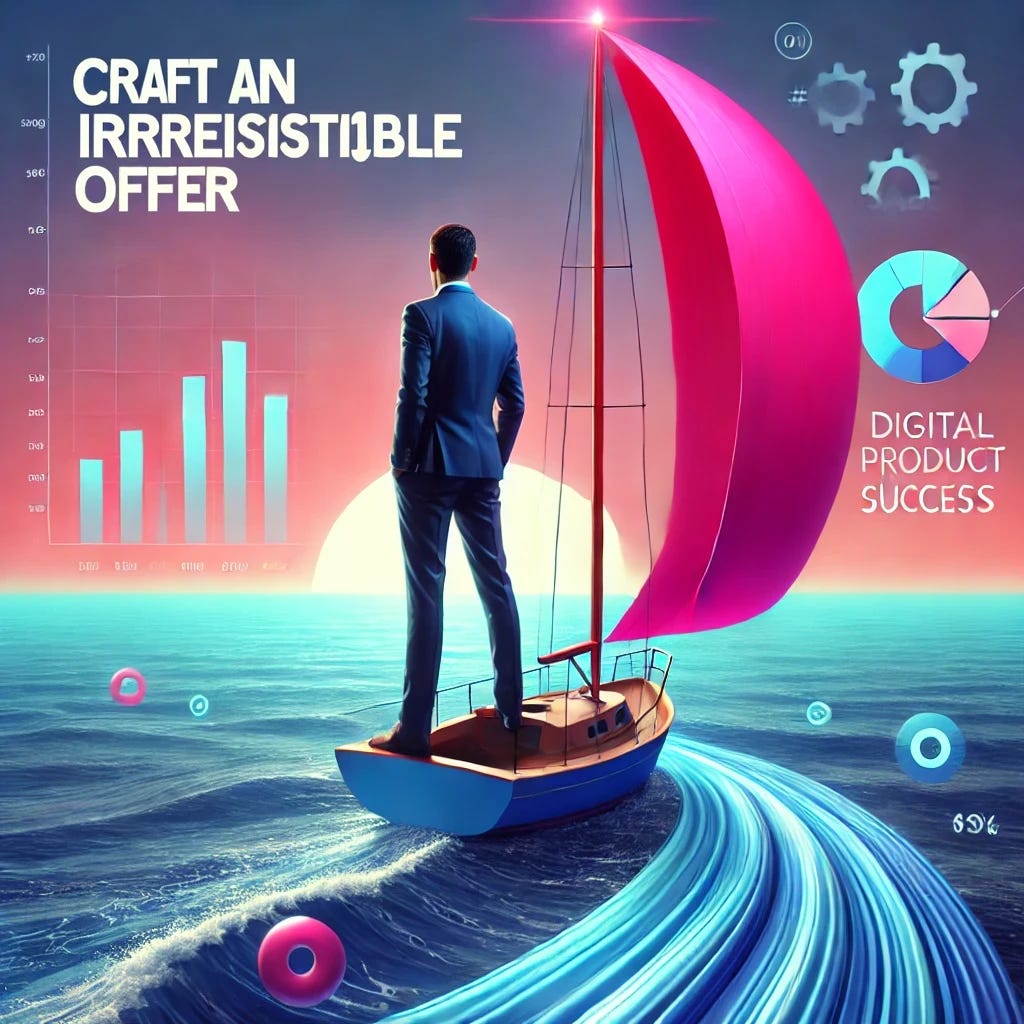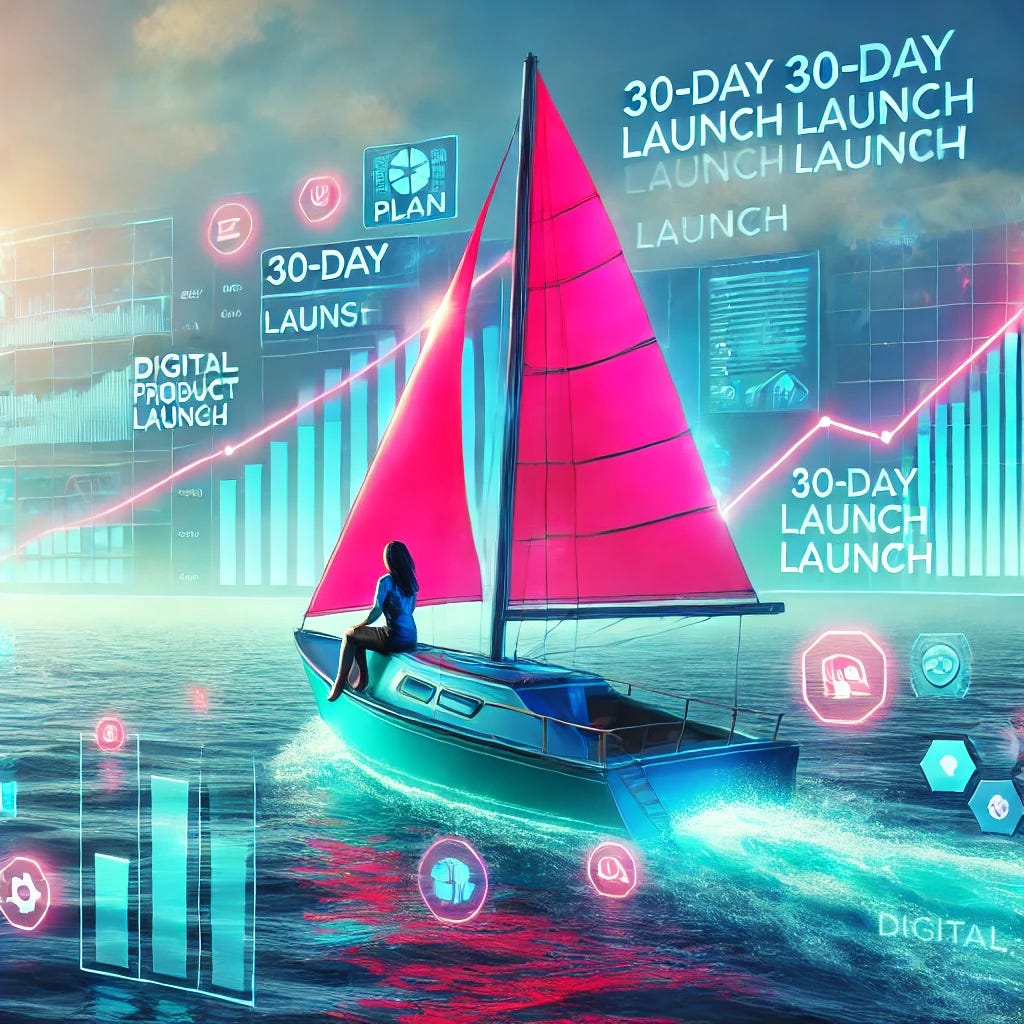Escape the Client Trap: Your Step-by-Step Guide to Digital Product Success
The Blueprint to Breaking Free From Client Dependency
The biggest challenge for solopreneurs?
Breaking free from client dependency and unpredictable revenue.
Digital products offer a solution, but creating a successful one isn’t as simple as it sounds.
This guide will take you through a proven step-by-step framework to build and sell digital products that generate consistent income, allowing you to work less while earning more.
Why Solopreneurs Struggle to Escape the Client Trap
Most solopreneurs start by offering services—freelancing, coaching, consulting.
While this provides steady income, it also has limitations:
Time is money: Your income is directly tied to your working hours.
Client dependency: Without clients, revenue stops.
Burnout risk: Scaling means working more, not less.
Unpredictable revenue: Some months are great, others are stressful.
The shift to digital products is the natural next step, but many solopreneurs hesitate.
They either overthink, fear their product won’t sell, or get discouraged when they don’t see instant results.
"What if My Digital Product Fails?"
If you’ve ever thought:
“I don’t have a big audience, who will buy?”
“What if I launch and no one purchases?”
“I don’t know how to create a digital product that people actually need.”
You’re not alone. These doubts hold back thousands of solopreneurs from making their first digital product.
But here’s the thing: You don’t need a massive audience or a groundbreaking idea. You just need to solve a real pain point.
Let’s break it down.
The Digital Product Playbook: Your 5-Step Framework
Step 1: Validate Before You Create (Avoid Wasting Time)
Most product launches fail because creators build something nobody wants. Why not reverse the process?
Identify a specific pain point: Look for problems that cause frustration, waste time, or cost money.
INSTANT WIN: This week, search "struggling with" + your niche on Twitter, Reddit, or Facebook groups. Make a list of the top 3 recurring problems.
Test demand with micro-content: Share a solution-focused post addressing one pain point. If it gets high engagement, you've hit a nerve.
Example: A web designer posted "5 Homepage Mistakes Killing Your Conversions" and got 47 comments asking for solutions. This validated their template idea before building it.
Pre-sell to validate: Create a simple landing page with a "pre-order" button before building the full product.
Example: “Freelancers, tired of sending cold emails that get ignored? I’m creating a swipe file with proven scripts that landed me $10K+ in projects. Pre-order now for $19 (early-bird pricing) before it launches next week!”
Step 2: Start Simple, Deliver Value Fast
Your first digital product should take no more than 2 weeks to create. Choose from:
✅ Swipe Files & Templates → Instant solutions that save time
Example: Email templates, proposal frameworks, social media captions
✅ Checklists & Workflows → Processes that eliminate guesswork
Example: Client onboarding checklist, content creation workflow
✅ Mini-Guides → Specific problem-solving content (20-30 pages max)
Example: "The 7-Day Website Copy Framework"
INSTANT WIN: Take a process you've already mastered in your business. Document your exact steps. This is your first digital product foundation.
Step 3: Build Your Audience (Even If You're Starting From Zero)
You don't need thousands of followers—you need the right people who recognize your expertise.
The 30-Day Audience Building Plan:
Week 1: Establish authority
Post 3 lessons from your biggest professional mistakes
Share your step-by-step process for solving a common problem
Break down a popular trend in your industry (why it works/doesn't work)
Week 2: Engage & connect
Comment thoughtfully on 5 posts daily from ideal customers
Answer questions in 2-3 industry Facebook groups or subreddits
Host a 15-minute livestream addressing a specific pain point
Week 3: Capture attention & emails
Create a free "quick win" lead magnet (checklist, template, guide)
Share transformation stories (yours or clients)
Post a "myth-busting" thread debunking common misconceptions
INSTANT WIN: Today, set up a simple email capture form offering a free "cheat sheet" related to your digital product idea. Share it everywhere you're active online.
Step 4: Craft an Irresistible Offer
The difference between a product that sells and one that flops often comes down to positioning:
🔹 Focus on transformation, not features: "Notion Dashboard to Cut Your Admin Time by 80%" beats "My Notion Dashboard"
🔹 Create a no-brainer value proposition: Your product should solve a $1,000 problem for a $100 price (or a $100 problem for a $10 price)
🔹 Add urgency without sleaze: Limited spots, early-bird pricing, or exclusive bonuses for first 20 buyers
INSTANT WIN: Write your product sales page today. Focus on answering: What painful situation does your customer currently face, and what better situation will they experience after using your product?
Step 5: Price Strategically & Scale Systematically
Tiered Pricing That Works:
Basic tier: Entry-level price point ($19-49 for most digital products)
Premium tier: 2-3× basic price with additional features/support
VIP tier: 5-10× basic price with personalized elements
Example: A copywriting template pack might be $29 for basic templates, $79 for templates + video tutorials, and $199 for templates + group coaching call.
For more advanced pricing strategies, check out my newsletter on "6 Ways to Test Your Pricing Assumptions" where I break down exact methods to find your profit sweet spot.
The Scaling Roadmap:
Set up automated delivery through Gumroad, Podia, or ThriveCart
Create a 3-email welcome sequence for new customers
Repurpose customer questions into new content and product features
Track which traffic sources convert best and double down
INSTANT WIN: Choose your platform today (I recommend Gumroad for beginners) and set up your product page, even if it's just a "coming soon" notice.
Your First 30 Days to Digital Product Launch
Follow this exact timeline to go from idea to sales:
Days 1-7: Research & Validate
Identify top 3 pain points in your niche
Test content ideas on social media
Create simple landing page to gauge interest
Days 8-14: Create MVP
Build the simplest version that delivers value
Gather feedback from 3-5 ideal customers
Make necessary adjustments based on feedback
Days 15-21: Prepare Launch
Create sales page highlighting transformation
Set up delivery system and email automation
Prepare 3-5 content pieces supporting your launch
Days 22-30: Launch & Optimize
Announce to your audience
Offer special incentive for early adopters
Collect testimonials and iterate based on feedback
The Solopreneur's Next Steps
Remember, your first digital product doesn't need to be perfect—it just needs to solve a real problem.
The solopreneurs who succeed aren't the ones with the flashiest ideas or biggest audiences. They're the ones who take consistent action, test assumptions, and optimize based on real feedback.
Your future self—with more income, more time, and less stress—is waiting on the other side of that first digital product launch.
The best time to start is now.
PS. If you want build your email list on auto-pilot with Educational Email Course then DM me on X or LinkedIn.
Also if you are an aspiring solopreneur who is not ready to build digital products, but to start his journey by providing services and need a roadmap, then join my 5-Day Email Educational Course.
Let’s build your solopreneur business together!












